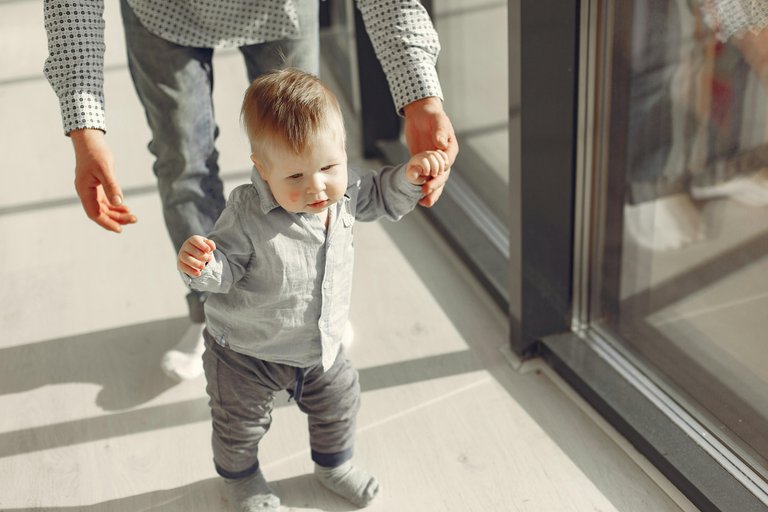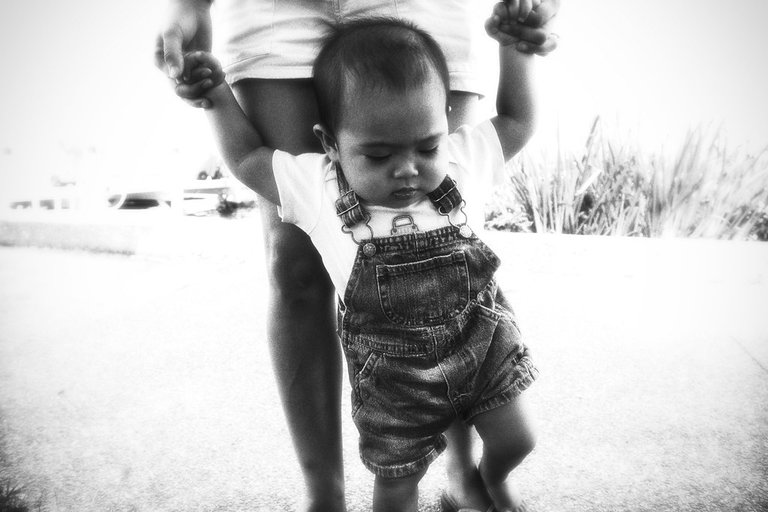One thing they say about humans, and particularly about kids is that, no two humans are the same, this explains why crawling, walking, talking, and other activities are generally not the same for all children. For over 100 years, researchers have tried to describe the developmental antecedents of walking, changes in the neurophysiological correlates of walking, and the kinematics of walking gait.
Certainly, we gain more insight into these topics through consistent research and the gathering of more efficient data. In the United States today, statistics show a child should begin to walk at approximately 12 months. Researchers from other areas like; Ghana, Norway, India, Oman, South Africa, Turkey, and Argentina also report that babies in this region begin to take their first unassisted steps at around 12-13 months.

pexels.com
However, some cultures have reported that most babies actively begin to walk months earlier than that, and of course, variation could be huge for various reasons. For example, some babies start to walk earlier while some linger for as much as when the child becomes 20 months old. Regardless of these variations, it was discovered that all the children experienced a healthy, and normal outcome later in life.
However, we need to also bear in mind that some cases of delayed walking may be a result of an existing medical condition or a developmental disorder. So, as a first-time Mum, I did my research on what is normal, what we should expect, and the various reasons why children have different times they would begin walking.
Before a baby takes the first step, he must have developed the coordination and strength required to maintain an upright posture. The child must also be able to bear most of his weight at least momentarily on one foot.
These signs are believed to be shown by a baby who is going to start walking anytime soon;
The child would typically begin to pull himself into a standing position by holding on to furniture or a human, children are believed to start doing this 4 months before they take their first step. Upon the first attempt, the baby would only be able to stand for a few seconds, and one can visibly see that the baby's legs are stiff and straight. As time goes on, however, the child would be able to comfortably stand with slightly flexed knees whilst holding on.

flickr.com
The next noticed milestone is that the baby would be noticed to have the strength to shift their weight from one leg to the other. If the baby is held by the hand, he will be able to walk in a forward direction. Studies show that when a child gets to this age, he would begin to walk in 3 months, although there is no tightly followed-up sequence to be followed.
Most studies show that most babies start walking within 2-3 months of standing unassisted. Expect that babies would fall a lot but stand again to continue the struggle of learning. If your baby isn't crawling, there is no need to panic much yet, because some children just begin to walk without crawling at all.
Speaking about the variation earlier, we mentioned that babies experience different time lapses and this is because they face several obstacles and in some cases, even their bodies. A good example is when a baby has skinny legs and a higher muscle-to-fat ratio, such a baby would have a less stressful time-fighting gravity and may begin to walk sooner than a plumber, opportunities provided for movement and practice also have a significant impact.
Generally speaking, when a baby has more time to exercise, spends more time outiside a cradle, crib, or sling, major milestones are better achieved in life.
Remember we touched on culture a little earlier, now here is a good example of how culture affects the walking of a child. The Kipsigis people of Kenya who raise crops and herd cattle have a strong culture that encourages infants to develop strong motor skills for walking, they hold a newborn baby upright, allowing his or her feet to touch the ground, and the baby would appear to take alternating steps as if ready to walk.
Most certainly, the infant is unable to walk yet as young babies do not have the coordination, body proportions, and muscle development required to walk efficiently. The Kipsigis do not ignore the stepping reflex their infant show which often disappears with all babies at eight weeks, they take advantage of it by supporting babies by the armpits, bouncing the babies on their laps, and stimulating the stepping reflex.
When babies from this culture are around 7-8 months old, they have become strong enough to start walking around with support on the ground.
At the end of the day, it all boils down to practice and consistent support from parents, but we also have some situations when it is a medical condition, most likely neurological disorders like cerebral palsy or Down's syndrome. The medical reasons are also a long topic on its own, I think I will touch on that later, so I do not bore you with my lengthy write-up. I will see you soon dear friends.
FURTHER STUDIES.
https://parentingscience.com/when-do-babies-start-walking/
https://www.ncbi.nlm.nih.gov/pmc/articles/PMC3591461/
https://vu.nl/en/research/understanding-how-children-learn-to-walkme

Hi, I am Tobi, a writer, speaker, relationship blogger, and lover of good music. I love making friends and learning from people. If you want to hear me speak on relationships and general life issues, you can find my YouTube channel where you can watch any episode for free, please do not forget to subscribe, friends. I sincerely appreciate every love I get from here, Kindly do well to keep them coming.

